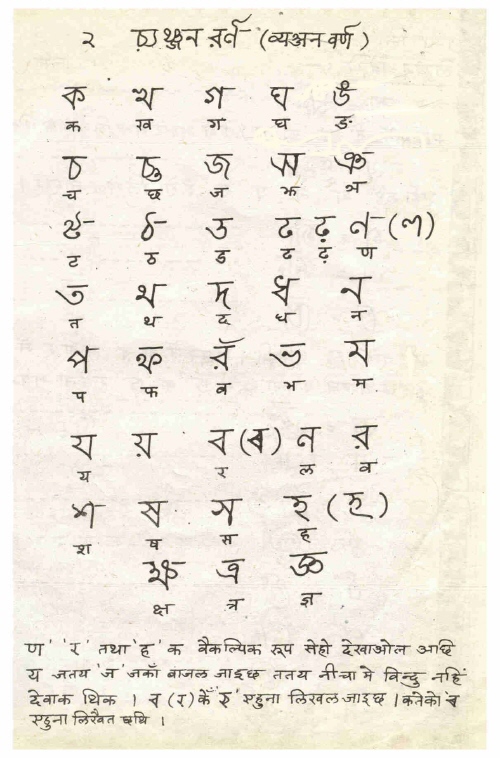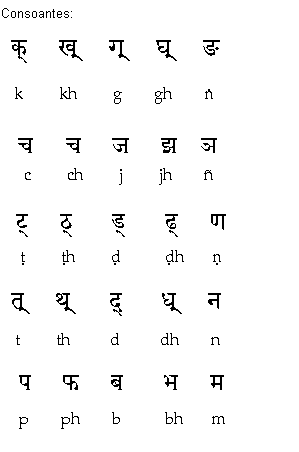|
Ghyanglekh Rural Municipality
Ghyanglekh is a Rural municipality located within the Sindhuli District of the Bagmati Province of Nepal. The municipality spans of area, with a total population of 13,661 according to a 2011 Nepal census. On March 10, 2017, the Government of Nepal restructured the local level bodies into 753 new local level structures. The previous Amale, Bastipur, Tamajor, Netrakali and Shanteshwari VDCs were merged to form Ghyanglekh Rural Municipality. Ghyanglekh is divided into 5 wards, with Bastipur declared the administrative center of the rural municipality. Demographics At the time of the 2011 Nepal census, Ghyanglekh Rural Municipality had a population of 13,761. Of these, 73.9% spoke Tamang, 9.9% Nepali, 6.8% Magar, 4.2% Newar, 2.4% Thangmi, 2.3% Sunwar, 0.3% Urdu, 0.1% Maithili and 0.1% other languages as their first language. In terms of ethnicity/caste, 73.9% were Tamang, 7.1% Magar, 5.8% Newar, 3.3% Kami, 3.0% Chhetri, 2.4% Sunuwar, 2.4% Thami, 0.6% Hill Brahmi ... [...More Info...] [...Related Items...] OR: [Wikipedia] [Google] [Baidu] |
Gaunpalika
A gaunpalika ( ne, गाउँपालिका, lit=rural municipality, translit=Gāum̐pālikā ) is an administrative division in Nepal. The Ministry of Federal Affairs and Local Development dissolved the existing village development committees and announced the establishment of this new local body. It is a sub-unit of a district. There are currently 460 rural municipalities. History The village development committee was the previous governing body of villages in Nepal. They were replaced on 10 May 2017 by the rural municipalities which were formed by combining different VDCs. The decision was taken by the cabinet of Nepal after modifications in the report proposed by the Local Level Restructuring Commission. Initially 481 rural municipalities were formed but it was later changed to 460 municipalities. According to the Ministry of Federal Affairs and Local Development the new bodies were to be called "rural municipality" and not "village council" which was the literal tran ... [...More Info...] [...Related Items...] OR: [Wikipedia] [Google] [Baidu] |
Shanteshwari
Shanteshwari is a village development committee in Sindhuli District in the Janakpur Zone of south-eastern Nepal. At the time of the 1991 Nepal census The 1991 Nepal census was a widespread national census conducted by the Nepal Central Bureau of Statistics. Working with Nepal's Village Development Committees at a district level, they recorded data from all the main towns and villages of each ... it had a population of 2,385 people living in 377 individual households. References External linksUN map of the municipalities of Sindhuli District Populated places in Sindhuli District {{Sindhuli-geo-stub ... [...More Info...] [...Related Items...] OR: [Wikipedia] [Google] [Baidu] |
Newar People
Newar (; new, नेवार, endonym: Newa; new, नेवा, Pracalit script:) or Nepami, are the historical inhabitants of the Kathmandu Valley and its surrounding areas in Nepal and the creators of its historic heritage and civilisation. Page 15. Newars form a linguistic and cultural community of primarily Indo-Aryan and Tibeto-Burman ethnicities following Hinduism and Buddhism with Nepal Bhasa as their common language. Newars have developed a division of labour and a sophisticated urban civilisation not seen elsewhere in the Himalayan foothills. Newars have continued their age-old traditions and practices and pride themselves as the true custodians of the religion, culture and civilisation of Nepal. Newars are known for their contributions to culture, art and literature, trade, agriculture and cuisine. Today, they consistently rank as the most economically and socially advanced community of Nepal, according to the annual Human Development Index published by UNDP. Nepal ... [...More Info...] [...Related Items...] OR: [Wikipedia] [Google] [Baidu] |
Magars
The Magar, also spelled as Mangar, and Mongar, are the third largest ethnolinguistic groups of Nepal, indigenous to Western Nepal and representing 7.1% of Nepal's total population according to the 2011 Nepal census. The original home of the Magar people was to the west of Gandaki river, and roughly speaking, consisted of that portion of Nepal which lies between and around about Gulmi, Arghakhanchi, and Palpa. This part of the country was divided into twelve districts known as "''Bahra Magarat''" (Confederation of Twelve Magar Kingdoms), which included the following regions of that period: Argha, Khanchi, Bhirkot, Dhor, Garhung, Ghiring, Gulmi, Isma, Musikot, Pyung, Rising, Satung, and Pyung. During the medieval period, the whole area from Palpa to Rukum Rolpa was called the "Magarat"'','' a place settled and inhabited by Magars. Another Confederation of Eighteen Magar Kingdoms known as "''Athara Magarat''" also existed, and was originally inhabited by Kham Magars. Origin There ... [...More Info...] [...Related Items...] OR: [Wikipedia] [Google] [Baidu] |
Tamang People
The Tamang (; Devanagari: तामाङ; ''tāmāṅ'') are an Tibeto-Burmese ethnic group of Nepal. In Nepal Tamang/Moormi people constitute 5.6% of the Nepalese population at over 1.3 million in 2001, increasing to 1,539,830 as of the 2011 census. Tamang people are also found in significant numbers in the Indian state of Sikkim and districts of Darjeeling and Kalimpong in West Bengal state of India and various districts in the southern foothills of the Kingdom of Bhutan. Such districts include the Tsirang District, the Dagana District, the Samtse District, the Chukha District, the Sarpang District and the Samdrup Jongkhar District. Emergent North-East : A Way Forward By H. C. Sadangi Tamang language is the fifth most-spoken language in Nepal. Etymology ''Tamang'' may be derived from the word ''Tamang'', where ''Ta'' means "horse" and ''Mak'' means "warrior" in Tibetan. However, there are no written documentations of Horse Riders. Some scientific research claims Tamangs ha ... [...More Info...] [...Related Items...] OR: [Wikipedia] [Google] [Baidu] |
Maithili Language
Maithili () is an Indo-Aryan language spoken in parts of Languages of India, India and Languages of Nepal, Nepal. It is native to the Mithila region, which encompasses parts of the Indian states of Bihar and Jharkhand as well as Nepal's eastern Terai. It is one of the 22 Eighth Schedule to the Constitution of India, officially recognised languages of India and the second most spoken Languages of Nepal, Nepalese language in Nepal. The language is predominantly written in Devanagari, but there were two other historically important scripts: Tirhuta script, Tirhuta, which has retained some use until the present, and Kaithi script, Kaithi. Official status In 2003, Maithili was included in the 8th Schedule, Eighth Schedule of the Indian Constitution as a recognised language of India, Indian language, which allows it to be used in education, government, and other official contexts in India. Maithili language is included as an optional paper in the Union Public Service Commission, UP ... [...More Info...] [...Related Items...] OR: [Wikipedia] [Google] [Baidu] |
Sunwar Language
Sunuwar, Sunuwar, or Kõinch (; ; other spellings are Koinch and Koincha), is a Kiranti language spoken in Nepal and India by the Sunuwar people. It was first comprehensively attested by the Himalayan Languages Project. It is also known as Kõits Lo ( ; ), Kiranti-Kõits ( ; ), Mukhiya ( ; ). The Sunwar language is one of the smaller members of the Tibeto-Burman language family. About 40,000 speakers are residing in eastern Nepal. Names The language is commonly known as ''Koic,'' for many ethnic Sunwar and Sunwar speakers also refer to the language as “''Sunuwar, Kõinch'' '', Koinch'' or ''Koincha'' (कोँइच); ''Kõits Lo'' (कोँइच लो), ''Kiranti-Kõits'' (किराँती-कोँइच) or ''Mukhiya'' (मुखिया).” Moreover, most Sunwar speakers have the surname (सुनुवार), ''Sunuvār'' in Latin script. Many affiliated Sunwar with Sunar; they share the initial syllable, ''sun'', “gold,” in Nepali, similar to the S ... [...More Info...] [...Related Items...] OR: [Wikipedia] [Google] [Baidu] |
Thangmi Language
Thangmi, also called Thāmī, Thangmi Kham, Thangmi Wakhe, and Thani, is a Sino-Tibetan language spoken in central-eastern Nepal and northeastern India by the Thami people. The Thami refer to their language as ''Thangmi Kham'' or ''Thangmi Wakhe'' while the rest of Nepal refers to it as ''Thāmī''. The majority of these speakers, however, live in Nepal in their traditional homeland of Dolakhā District. In India, the Thami population is concentrated mostly in Darjeeling. The Thangmi language is written using the Devanagari script. Thangmi has been extensively documented by Mark Turin. Distribution Thangmi is spoken in Bagmati Province, mainly in the region of Dolakha; villages on Sailung Khola (The northern panhandle of the Ramechhap District; mainly in Gokulganga); eastern regions of Sindhupalchowk District; and by some elders among the population who migrated to the cities in the Kathmandu Valley. Very few ethnic Thami outside Dolakha and Sindhupalcok districts speak Than ... [...More Info...] [...Related Items...] OR: [Wikipedia] [Google] [Baidu] |
Newar Language
Newar (), or Newari and known officially in Nepal as Nepal Bhasa, is a Sino-Tibetan language spoken by the Newar people, the indigenous inhabitants of Nepal Mandala, which consists of the Kathmandu Valley and surrounding regions in Nepal. "Nepal Bhasa" literally means "Nepalese language", however the language is not the same as Nepali (Devanāgarī: नेपाली), the country's current official language of the central government. The two languages belong to different language families (Sino-Tibetan and Indo-European, respectively), but centuries of contact have resulted in a significant body of shared vocabulary. Newar was Nepal's administrative language from the 14th to the late 18th century. From the early 20th century until democratisation, Newar suffered from official suppression. From 1952 to 1991, the percentage of Newar speakers in the Kathmandu Valley dropped from 75% to 44% and today Newar culture and language are under threat. The language has been listed ... [...More Info...] [...Related Items...] OR: [Wikipedia] [Google] [Baidu] |
Magar Language
Magar Dhut ( ne, मगर ढुट, ) is a Sino-Tibetan Language spoken mainly in Nepal, Southern Bhutan, and in Darjeeling and Sikkim, India, by the Magar people. It is divided into two groups (Eastern and Western) and further dialect divisions give distinct tribal identity. In Nepal 788,530 people speak the language. While the government of Nepal developed Magar language curricula, as provisioned by the constitution, the teaching materials have never successfully reached Magar schools, where most school instruction is in the Nepali language. It is not unusual for groups with their own language to feel that the "mother-tongue" is an essential part of identity. The Dhut Magar language is sometimes lumped with the Magar Kham language spoken further west in Bheri, Dhaulagiri, and Rapti zones. Although the two languages share many common words, they have major structural differences and are not mutually intelligible. Geographical distribution Western Magar Western Magar ... [...More Info...] [...Related Items...] OR: [Wikipedia] [Google] [Baidu] |
Nepali Language
Nepali (; , ) is an Indo-Aryan language native to the Himalayas region of South Asia. It is the official, and most widely spoken, language of Nepal, where it also serves as a '' lingua franca''. Nepali has official status in the Indian state of Sikkim and in the Gorkhaland Territorial Administration of West Bengal. It is spoken by about a quarter of Bhutan's population. Nepali also has a significant number of speakers in the states of Arunachal Pradesh, Assam, Himachal Pradesh, Manipur, Meghalaya, Mizoram and Uttarakhand. In Myanmar it is spoken by the Burmese Gurkhas. The Nepali diaspora in the Middle East, Brunei, Australia and worldwide also use the language. Nepali is spoken by approximately 16 million native speakers and another 9 million as a second language. Nepali is commonly classified within the Eastern Pahari group of the Northern zone of Indo-Aryan. The language originated from the Sinja Valley, Karnali Province then the capital city of the Khasa K ... [...More Info...] [...Related Items...] OR: [Wikipedia] [Google] [Baidu] |








